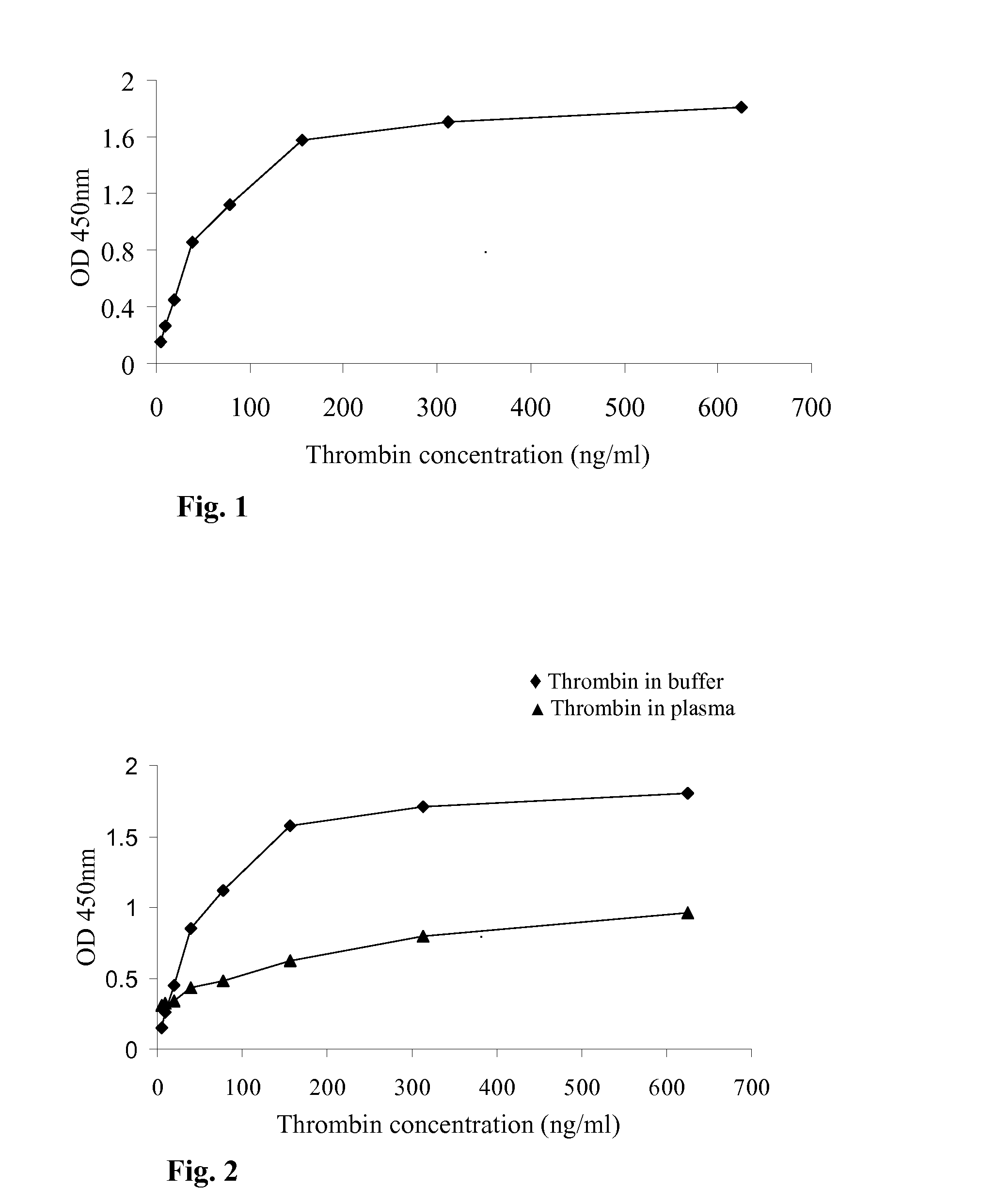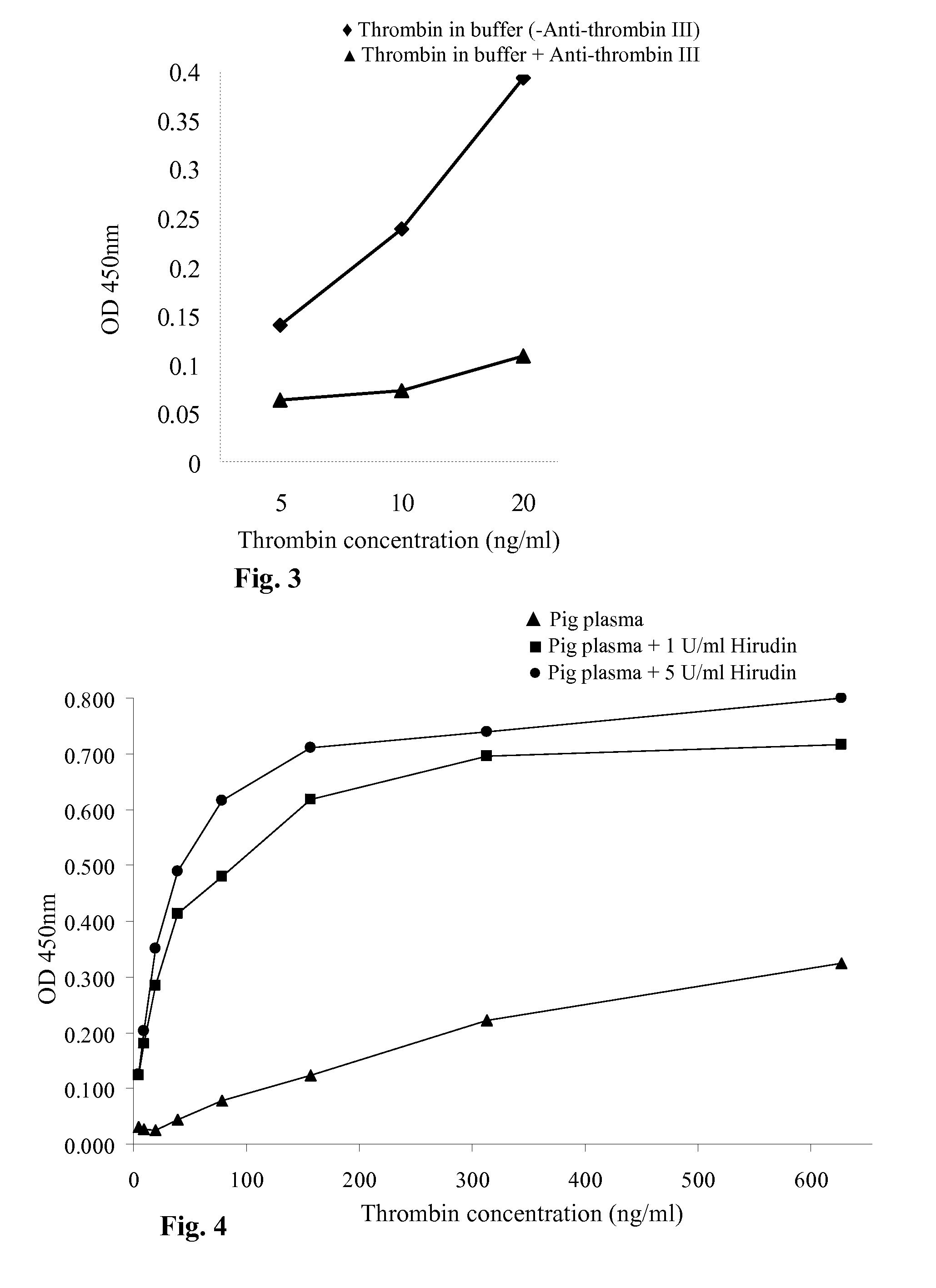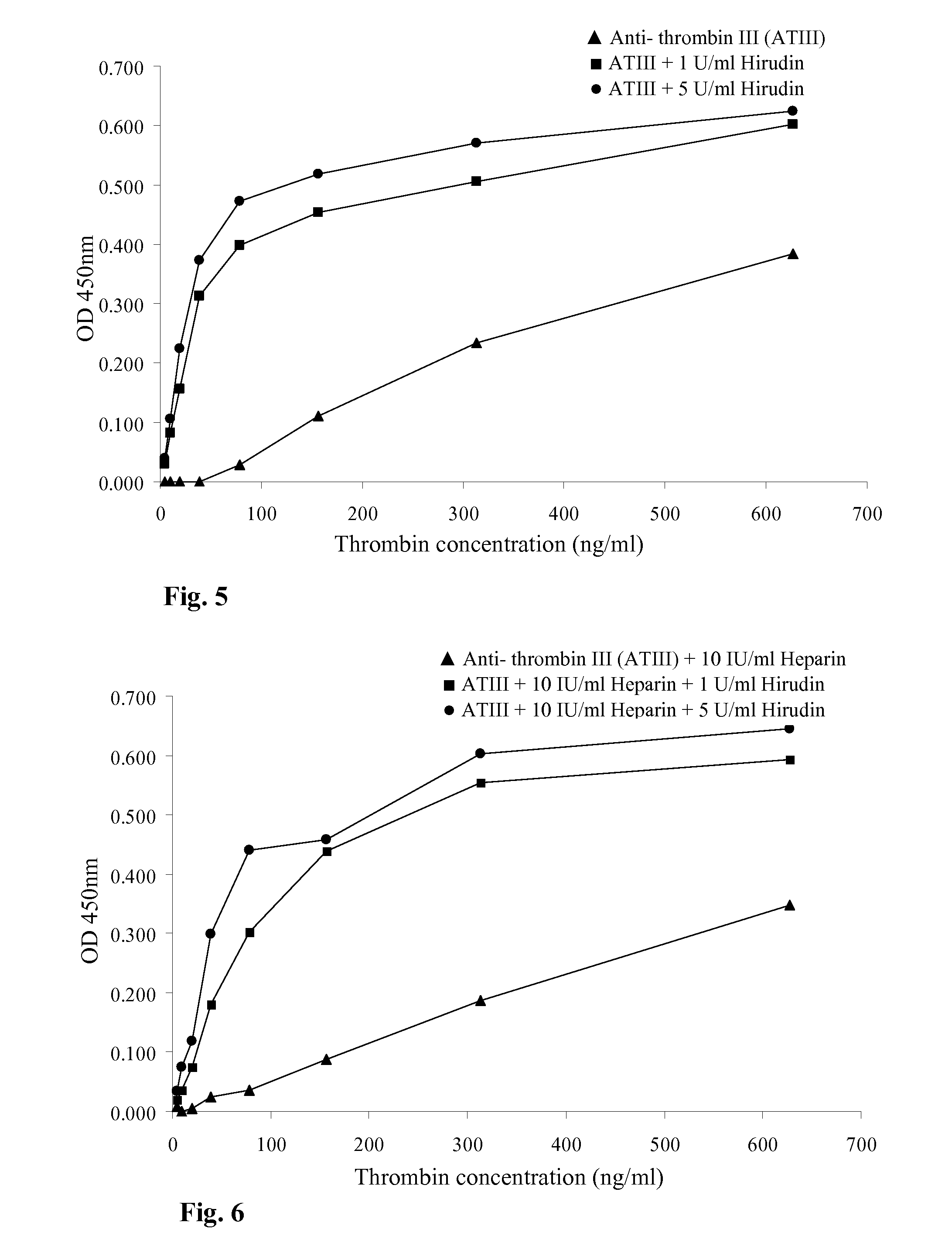Immunoassay for thrombin detection
a technology of immunoassay and thrombin, which is applied in the field of immunoassay for quantifying thrombin, can solve the problems of difficult detection of thrombin by immunoassay using thrombin specific antibodies, and in a background of relatively large quantities of prothrombin, such as in plasma samples, to achieve the effect of reducing the difficulty of immunoassay and detecting thrombin
- Summary
- Abstract
- Description
- Claims
- Application Information
AI Technical Summary
Benefits of technology
Problems solved by technology
Method used
Image
Examples
example 1
Sandwich ELISA for Detecting Thrombin in a Sample
[0066]A two-site (sandwich Type) immunoassay was developed to detect thrombin in a tested sample. Briefly, the sample containing the thrombin was pipetted onto a solid phase, which was pre-coated with excess of polyclonal anti-thrombin antibodies (“Capture antibody”), and incubated as elaborated in the Material and Methods section. During this incubation, thrombin in the sample bounds to the capture antibody and all other sample constituents are then washed out. Next, an excess of labeled anti-thrombin antibody was added. After incubation, the excess of labeled antibody was washed away. In this immunoassay, the same polyclonal antibody served as the capture and the detection / labeled antibody. The polyclonal antibody was an affinity purified IgG sheep anti human thrombin. The antibodies were raised by using as immunogen purified human thrombin (prepared from purified prothrombin) with the active site / catalytic site blocked with PPACK. ...
example 2
Interference of Substances Present in the Plasma with the Detection of Thrombin by the Thrombin Specific Immunoassay
[0070]The previous experiment shows the ability of the above immunoassay to detect thrombin in a buffer sample containing thrombin. In this experiment, the ability of the above-developed immunoassay to detect thrombin in pig plasma samples (obtained from the Institute of animal research, Kibutz Lahav Israel) that were spiked with increasing concentrations of thrombin (the same as in Example 1) was examined Comparable thrombin concentrations in blocking buffer were used as reference. The immunoassay was carried out as above, and the obtained OD values for both groups [i.e. group 1—plasma samples spiked with thrombin (▴); and group 2—buffer sample comprising thrombin (♦)] are shown in FIG. 2.
[0071]It can be seen that the OD results obtained for thrombin in plasma were much lower than the OD results obtained for thrombin in blocking buffer in the same thrombin concentrati...
example 3
Interference of AT-III with the Detection of Thrombin by the Thrombin Specific Immunoassay
[0072]Example 2 shows that there are substances in the plasma that interfere with the thrombin specific immunoassay. The normal AT-III concentration in human blood plasma is high and is approximately 0.12 mg / ml. The following experiment was carried out in order to examine whether the AT-III present in the plasma is the factor that interferes with the immunoassay.
[0073]For this purpose, samples with AT-III (American diagnostica; Catalog No. 433; diluted in blocking buffer to a final concentration of 1 IU / ml) or without AT-III (blocking buffer solution as indicated above) were prepared. Next, different concentrations of thrombin were added into these samples (final concentrations of 4.9, 9.8, and 19.5 ng / ml prepared as elaborated above). The immunoassay was carried out as elaborated above to detect thrombin in the samples.
[0074]It can be seen that the OD results obtained in the presence of AT-III...
PUM
 Login to View More
Login to View More Abstract
Description
Claims
Application Information
 Login to View More
Login to View More - R&D
- Intellectual Property
- Life Sciences
- Materials
- Tech Scout
- Unparalleled Data Quality
- Higher Quality Content
- 60% Fewer Hallucinations
Browse by: Latest US Patents, China's latest patents, Technical Efficacy Thesaurus, Application Domain, Technology Topic, Popular Technical Reports.
© 2025 PatSnap. All rights reserved.Legal|Privacy policy|Modern Slavery Act Transparency Statement|Sitemap|About US| Contact US: help@patsnap.com



